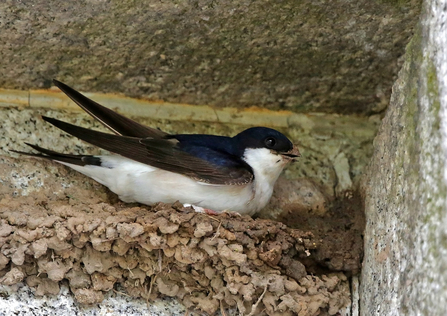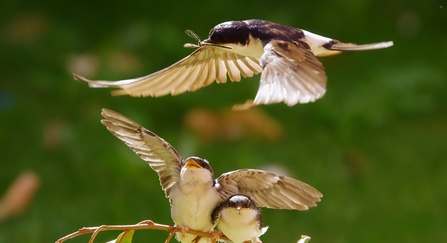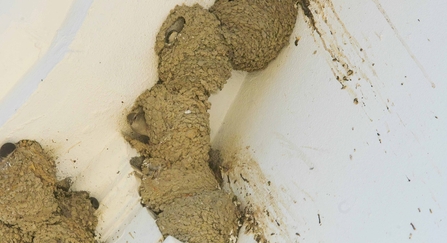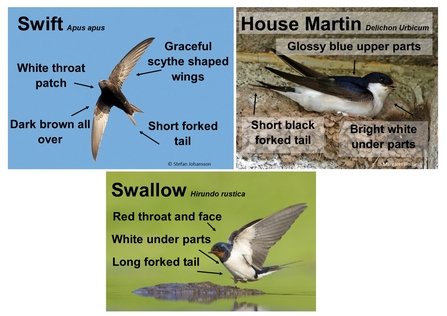The house martins are back on my street. For years they nested on two of the houses opposite me and at least one more pair, further up the road. Then a couple of years ago they didn’t make it back. Summer wasn’t the same and I missed them badly.
Mud for martins
House Martin, Delichon urbica - Dawn Monrose

(c) Margaret Holland
Now they are here again, their bubbling chatter lighting up the days. And once again, they are nesting on my neighbours’ houses over the road. Their old mud bowl nests have needed just a little patching up to get them back in shape. To encourage others to join them I’ve put out a tray of wet mud – the ground is rock hard and late birds may struggle to find building materials close-by.

(c) James Rogerson
Like swifts, they feed high in the air, catching insects wafted up in thermals. The air is colder, the higher they go. To keep them warm in these altitudes, martins have feathered legs and feet. Swifts’ legs are featherless but they can tuck their shorter limbs tight against their body to prevent heat loss. It may also be that non-breeding house martins spend their nights aloft, just as swifts do.

(c) Derek Moore
Putting up an artificial nest can be a useful way to attract martins to your house. However, they prefer the nests they make themselves. It takes around a thousand little pieces of mud and some 10 – 14 days to build. Next, the nest is lined with feathers – almost always white. It has been discovered that white feathers have antiseptic properties that stop harmful bacteria damaging the eggs.
Fledglings return to the nest at night, even after the second brood has hatched. An ornithologist in Finland once counted 11 sleeping martins in a single nest, including the parents and young of two broods. By day they explore other nests in the colony, often clinging to remnant ledges, sometimes cadging food from adult birds. In turn, these first brood fledglings will sometimes feed their younger siblings.
If you do have an empty nest, don't knock it down! Look forward to the next year when martins return from Africa, they are more than likely to re use their old nest.

Sarah Gibson
Sarah Gibson
Communications Officer, Shropshire Wildlife Trust
Sarah's book, Swifts & Us, is due to be published by William Collins in April 2021. It is a fascinating story of discovery about these mysterious birds and the people that strive to ensure they have a future.


